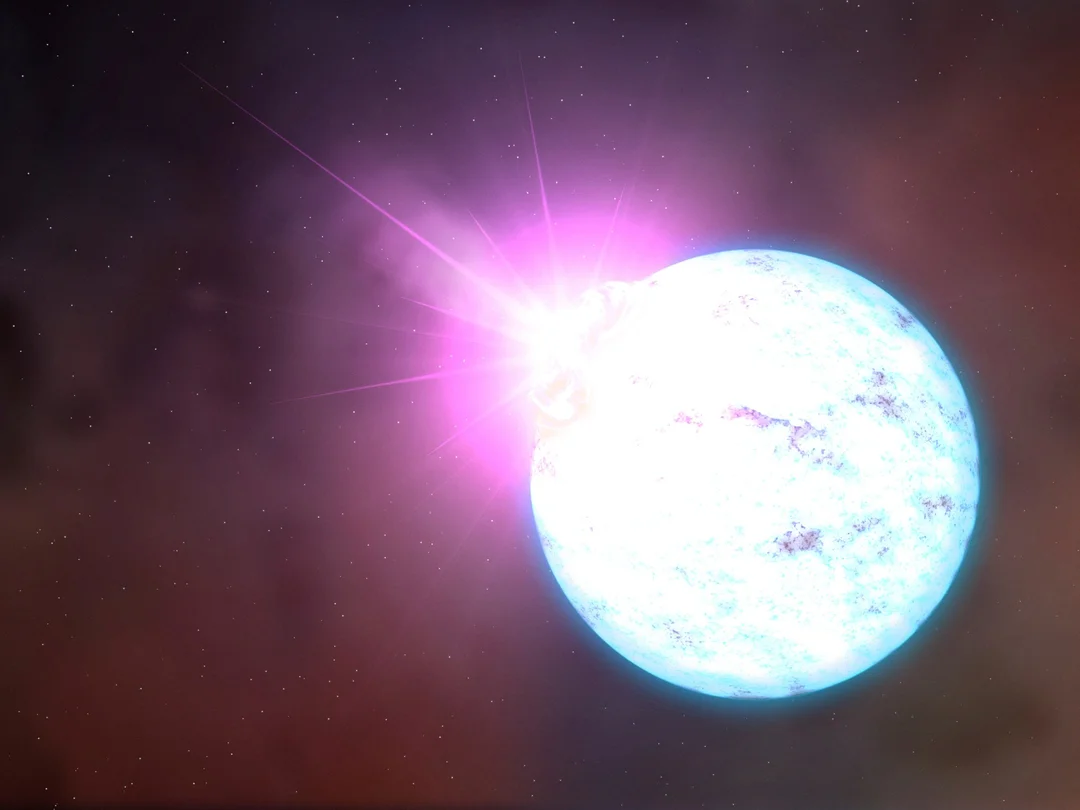
Cosmic Gold Rush: Magnetar Flares Reveal a New Source of Precious Metals in the Universe
For centuries, the origin of gold has remained a captivating mystery. Now, groundbreaking research points to violent cosmic events, specifically magnetar giant flares, as a significant source of this precious metal. This discovery challenges long-held assumptions about supernovae and neutron star collisions being the sole producers of gold.
A new study published in The Astrophysical Journal Letters, led by Dr. Matt Nicholl of the University of Birmingham and Anirudh Patel, a doctoral student at Columbia University, used data from a 2004 gamma-ray burst (GRB 041219A) and archival telescope data to identify telltale signs of heavy element formation, including gold, within the ejecta of magnetar flares.
"What we’re seeing is essentially a cosmic gold factory in action," said Dr. Nicholl. The James Webb Space Telescope (JWST), with its infrared capabilities, detected clear signatures of tellurium, a heavy element produced through the same process that creates gold, providing crucial evidence supporting this claim.
Magnetars are a rare type of neutron star characterized by incredibly strong magnetic fields – trillions of times stronger than Earth’s. These fields can twist and snap, resulting in violent flares that release immense energy. The study estimates that these magnetar flares may account for up to 10% of all heavy elements, including gold, platinum, and uranium, in the universe. This is in addition to the gold produced by neutron star mergers. “This is a very exciting development,” said Hsin-Yu Chen, an astrophysicist at the University of Texas at Austin who was not involved in the study.
While neutron star collisions, or kilonovas, were previously considered the primary source of gold, they are infrequent and occur relatively late in galactic history. Magnetar flares, on the other hand, are more frequent and are believed to have been around early in our galaxy, offering an explanation for the presence of heavy metals in early stars. The team estimates that a single neutron star collision can produce gold weighing more than 100 times the mass of Earth’s oceans.
The research also sheds light on how these elements are distributed across the cosmos. Material ejected from magnetar flares is swept up by cosmic winds and eventually incorporated into interstellar gas clouds. Over billions of years, these clouds give rise to new stars and planets. It is believed that most of Earth’s gold arrived during the Late Heavy Bombardment around 4 billion years ago via asteroid impacts. Therefore, the gold in your jewelry may originate from a cataclysmic neutron star event that predates our solar system.
Future missions, such as NASA’s Compton Spectrometer and Imager (COSI), scheduled for launch in 2027, will play a crucial role in further understanding the origin of elements by studying energetic phenomena like magnetar giant flares. COSI could identify individual elements created in the giant flares, helping to form a better understanding of the origin of the elements.
This discovery revolutionizes our understanding of cosmic chemistry and emphasizes how the universe's most violent events contribute to building the planets and precious metals. It answers a question pondered for centuries. How were the elements on Earth forged?
Did you find this cosmic detective story fascinating? Share your thoughts and questions in the comments below!